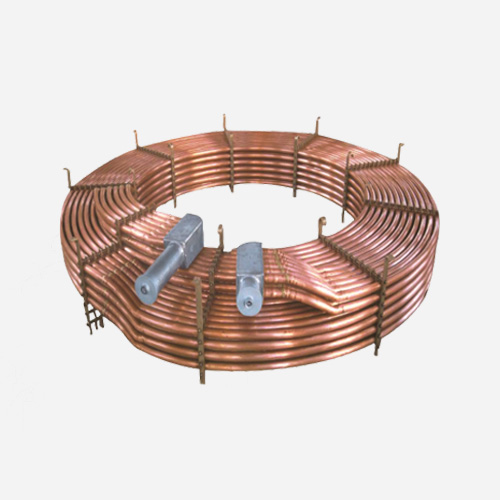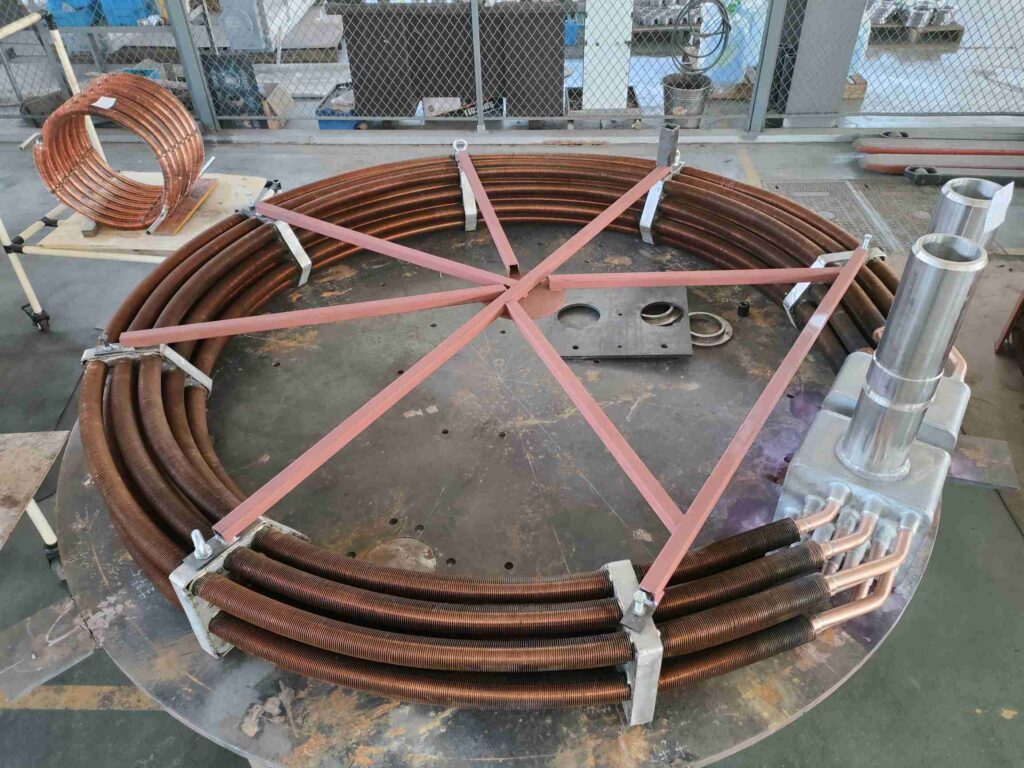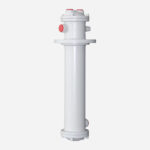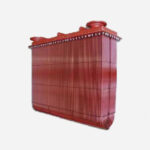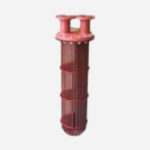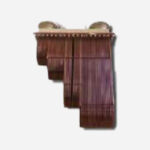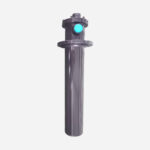We also call coil cooler, which mainly refers to the internal heat exchange equipment with the coil as the heat exchanger tube and water and oil as the medium. Equipped with large asynchronous and synchronous vertical motors and large hydro generators. The bearing oil cooler is mainly composed of an end cover, cooler body, copper tube, tube clamp, and bracket.
The coils can be made of copper, stainless steel and nickel-copper tubes, rolled fin tubes, and aluminum tubes, which have good cooling performance and no leakage for a long time. In addition to the electric power system, it is also suitable for metallurgy, the chemical industry, mining, the light industry, and the heavy industry.
The bearing oil cooler is divided into vertical and horizontal according to the installation form. According to the form of the cooling tube is divided into two kinds of light tube type and enhanced heat transfer tube type.
Features of bearing oil cooler
This oil cooler includes a floating coil bearing oil cooler, floating coil volumetric heat exchanger, and floating coil heat exchange unit. There are several distinctive features.
① Strengthen heat transfer: spiral copper coil with cantilever fixed structure, when the heat medium flow through the tube, the coil produces high-speed round-trip movement, forcing the heat exchanger tube surrounding water to form a disturbance, thereby increasing the heat transfer film coefficient a0, reduce the fluid thermal resistance of the outer wall of the tube 1/a0, improve the total heat transfer coefficient.
② Automatic descaling: Due to the high speed of floating of the coil during the operation of the equipment, it is difficult for the scale to be deposited and attached to the outer wall of the tube. At the same time, due to the expansion and contraction of the coil with temperature changes, even if a small amount of scale is formed on the outer wall of the tube, it will automatically fall off (can be periodically excluded from the tank by the drain), lifting the traditional descaling process, so the bearing oil cooler can be kept in optimal operation for a long time
③ Precise temperature control: The bearing oil cooler can be equipped with a high-precision thermostat, which can continuously and automatically monitor the water temperature so that even if the load fluctuates, the water temperature can be kept in a stable range.
④ Reduce the area: bearing oil cooler is generally immersed/installed inside the medium, no external installation space is required.
The role of the bearing oil cooler in the motor
Bearing oil cooler is one of the important parts of the hydro generator, its function is to establish thermal dynamic balance by heat exchange between bearing friction heat and cooler so that the temperature of the shaft tile can be stabilized in the normal operating range.
At present, most of the thrust bearings of hydropower plant units are replaced by fluoroplastic tiles from gold tiles, and the water-cooled tile structure is canceled. Therefore, the temperature of the tile surface of the thrust shaft tile, the temperature of the tile body, and the oil temperature of the thrust oil tank mainly rely on the oil cooler for heat dissipation.
Ensuring the normal operation of the oil cooler becomes a key link to ensuring the normal operation of the thrust tile and the unit.
What quality problems with bearing oil cooler?
Leakage, when the oil cooler leaks, because the cooling water pressure is higher than the oil pressure, the cooling water enters the oil tank from the leakage under the pressure difference, which makes the oil quality worse, so that emulsification occurs, resulting in the thrust tile surface can not form a normal lubricant film, thus causing the burning tile accident.
When shutting down the water, due to the negative pressure, the cooling oil in the oil tank enters the copper ring pipe from the leakage and flows away, causing the oil level of the oil tank to decrease, which will seriously lead to the alarm of oil shortage in the thrust oil tank of the unit.
How many kinds of leaks are there?
Internal leakage: internal leakage due to poor operating conditions; stress problems; wear and tear of sediment and corrosion of river water; negative pressure phenomenon; unreasonable structure; aging of fittings, etc.
External leakage: long-term operation, aging of fittings, etc.
How to determine the leakage of the cooler and how to deal with it
When the oil level of the unit is too high, it may be caused by the leakage of the oil cooler which leads to water in the oil tank, or the oil filling valve is not closed tightly (or damaged), and the fault must be accurately judged as follows.
①Watch whether the oil quality is cloudy and emulsified from the oil tank window under the running state of the unit;
②Open the oil drain valve in the shutdown state and release part of the cooling oil if there is water in the oil (the specific gravity of water is larger than that of oil) at the bottom of the oil tank in the static state, it can be confirmed that the oil cooler is leaking oil;
If there is a floating oil layer in the water inside the pipe, the oil cooler is judged to be leaking.
After confirming the fault of oil cooler leakage, we should further analyze the specific leaking cooler:
① ring pipe in two ways for drainage, by segmentation to determine the oil leakage of the oil circuit (disassemble the connection flange of the cooling water ring pipe and the mother pipe, there is oil leakage all the way);
② Remove all the connecting tubes and observe for a period of time, the oil cooler end cover flange oil leakage oil cooler.
Leakage occurred to take the maintenance methods are:
① When repairing, if there are not many leaking parts, a copper pin with a small head of φ22.5 mm, a taper of 1:20, and a suitable length can be used to block the expansion port at both ends of the leaking copper pipe, and scrap the copper circuit to stop the leakage;
②For the unit with more leaking parts, it means that the oil cooler is seriously aged and needs to be replaced.
How to prevent leakage
(1) For the oil cooler copper tube, rubber seal, etc, which is seriously aged and the steel body is seriously rusted, the oil cooler should be replaced one by one when the unit is overhauled and expanded, so as to completely release the safety hidden danger.
(2) To prevent negative pressure leakage, close all water inlet and outlet valves before shutting down the unit and disconnecting the water; when opening the water, open the water inlet valve first and then open the drain valve.
(3) In order to prevent the side copper tube from being scratched and punctured when the oil cooler is installed, the oil separation plate should be chamfered and sharpened one by one, or the oil separation plate should be changed to an epoxy plate, or a protective iron plate should be added to the side of the oil cooler.
(4) Before the oil cooler is installed, it must be filled with water and pressurized according to the regulations, and the water pressure is 0.4 MPa, and there is no leakage for at least 30 min before the oil cooler is installed.
(5)When the oil cooler is installed, collision is strictly forbidden, and the oil tank is filled with oil after installation and observed for 24 hours, after confirming that there is no leakage and the oil level is normal, the ring pipe and connection pipe are installed.
(6) It is recommended to install a highly reliable oil mixing dynamic monitoring device to detect and display the content of water mixed in the oil system of the hydro generator set, and automatically issue an alarm signal within a certain limit to ensure the operational safety of the unit.

